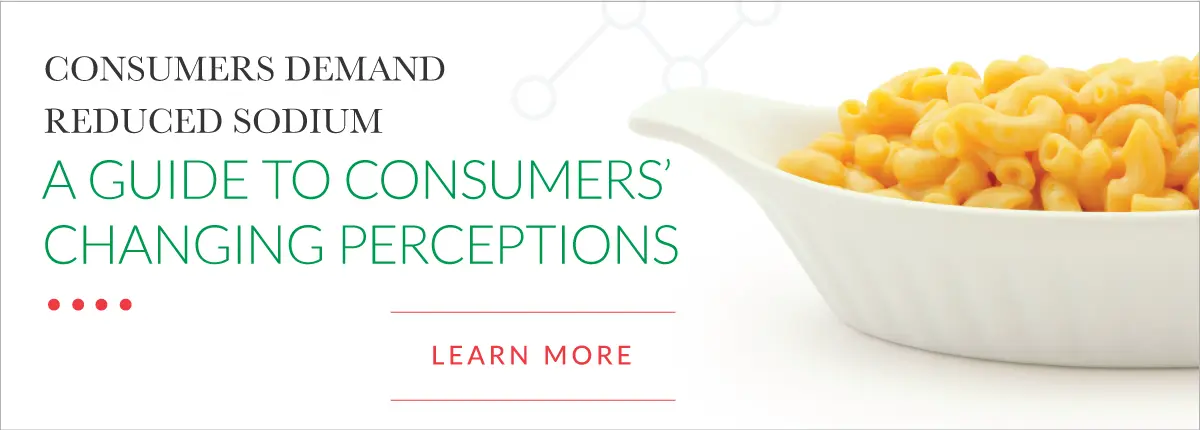 Late last year, the U.S. Department of Agriculture and U.S. Department of Health and Human Services published the 2020–2025 Dietary Guidelines for Americans, urging them to “make every bite count.”
Late last year, the U.S. Department of Agriculture and U.S. Department of Health and Human Services published the 2020–2025 Dietary Guidelines for Americans, urging them to “make every bite count.”
Unfortunately, many Americans aren’t following that advice. The report acknowledges that more than half of adults have one or more diet-related chronic diseases, such as cardiovascular disease, type 2 diabetes, obesity and some types of cancer. Despite these findings, the fundamental premise of the guidelines is that just about everyone, no matter their health status or age, can benefit from shifting food and beverage choices to better support healthy dietary patterns.
For consumers, the goal is to promote better dietary and lifestyle behaviors. For food and beverage manufacturers, the report helps provide a roadmap for innovation and improvements in how they formulate products and promote them in the marketplace.
To follow, we’ll provide a basic overview of the 2020–2025 Dietary Guidelines for Americans.
What Do New Dietary Guidelines State?
The 164-page report contains extensive research and recommendations, all of which are structured under the following four basic guidelines:
- Follow a healthy dietary pattern at every life stage
- Customize and enjoy nutrient-dense food and beverage choices to reflect personal preferences, cultural traditions and budgetary considerations
- Focus on meeting food group needs with nutrient-dense foods and beverages, and stay within calorie limits
- Limit foods and beverages higher in added sugars, saturated fat and sodium, and limit alcoholic beverages
Here, we’ll cover each of these four categories and demonstrate how including various forms of whey protein in formulations can play a role in helping food manufacturers address their customers’ needs to help improve their overall wellbeing
1. Follow a healthy dietary pattern at every life stage
While much of the food industry’s focus is on adults, the path to wellness begins early in life. That is why the USDA and Department of Health expanded its dietary guidelines to focus on various life stages. From infancy to older adulthood, it is never too early or too late to begin eating a healthier diet.
It’s critically important for parents to help their children form healthy eating habits early in life as they develop physically and mentally. Many studies find that the habits formed during childhood influence their approach to nutrition and wellness into adulthood.
Choosing products that have inherent nutritional value and no artificial ingredients is the start of a well-balanced diet. Just because a product is natural, however, doesn’t ensure it aligns with dietary recommendations. Whey protein is an all-natural low-fat, low-calorie ingredient that can replace caloric and high-fat ingredients like butter, cream, cream cheese, oil, cheese and more. Sample applications include desserts, soups, sauces, dips, snack bars, dressing, cereal and others.
RELATED: See How Grande Bravo® Whey Protein Concentrate Improves Nutrition
2. Customize and enjoy nutrient-dense food and beverage choices to reflect personal preferences, cultural traditions, and budgetary considerations
While nutrition is critically important, the reality is that people won’t sacrifice flavor or personal preferences. Any changes to a formulation in an attempt to improve nutrition need to ensure it still meets customer expectations.
Whey protein concentrate is remarkably versatile and is used in diverse applications, from clear, high-protein sports beverages to rich, creamy soups and sauces, allowing consumers to indulge without guilt. It’s easily incorporated into food production systems and maintains the flavor, texture and quality of formulations.
This is because whey protein has clean, inconspicuous flavors that don’t compromise a formulation’s taste profile. Customers won’t need to settle when choosing better-for-you options. As far as budgets are concerned, whey protein often lowers formulation costs when used to replace high-cost ingredients like fresh dairy and eggs.
RELATED: Use Grande Ultra® Whey Protein Isolate in Clear High-Protein Beverages
3. Focus on meeting food group needs with nutrient-dense foods and beverages, and stay within calorie limits
The report shows that many Americans do not meet recommendations for protein, and recommends that they need a more diverse range of protein sources. About 75% of Americans are getting enough meat, poultry, and eggs, but they lag behind for other forms of protein.
Whey protein is considered a superfood because of its concentrated nutrients, including all nine essential amino acids, vitamin D, calcium and other important building blocks for healthy living. Adding to its nutritional value is the fact that it’s lower in fat and calories than most other protein sources. What’s more, the protein contained in whey ranks high on the bioavailability scale, meaning it is easily digested and absorbed into the body.
RELATED: Use Grande WPCrisp® In Crunchy, High-Protein Applications
4. Limit foods and beverages higher in added sugars, saturated fat, and sodium, and limit alcoholic beverages
Sugar has been in the crosshairs of advocacy groups and consumers for years, with many health officials attributing excessive sugar consumption to obesity and related health risks. Meanwhile, flying under the radar and receiving much less attention is the risk of excess sodium in the diet.
Too much sodium in the diet can increase risks of high blood pressure, heart disease and stroke. No more than 2,300 milligrams of sodium is recommended per day, but Americans consume an average of 3,400 daily. Where is all that sodium coming from? More than 70% of sodium consumption comes from processed and packaged foods and restaurant meals, according to the CDC.
Sodium reduction initiatives among food manufacturers is a growing market, but the challenges of making low-sodium formulations taste as good as the original has been an omnipresent challenge. Cheese sauces used in soups, appetizers and entrees are particularly high in sodium. New innovations in whey protein ingredients allow formulators to replace up to 30% of processed or fresh cheese in applications to reduce sodium while actually improving salty notes. Our eBook below highlights growing consumer interest in reduced sodium initiatives, so be sure to check it out.
RELATED: Grande Gusto® Whey Protein Product Reduces Sodium in Cheese Sauces
Explore Whey Protein’s Role in Improving Nutrition and Profits
Many food manufacturers rely on whey protein in various forms for its cost-saving properties when replacing expensive ingredients like milk, cream, cheese, eggs and more. Increasingly, they appreciate its ability to actually improve the quality, flavor and texture of their formulations in addition to their bottom lines.
Not all whey protein ingredients are created equal and don’t necessarily provide the same benefits when it comes to nutrition, cost savings or improved results. Here at Grande Custom Ingredients Group, our whey protein is of the highest quality, and our food scientists work with formulators to perfect their recipes with ideal solutions.
Contact us today to explore how various forms of whey protein can improve your formulations and operations. Once again, be sure to download our guide below, Increased Consumer Demand for Reduced Sodium.





